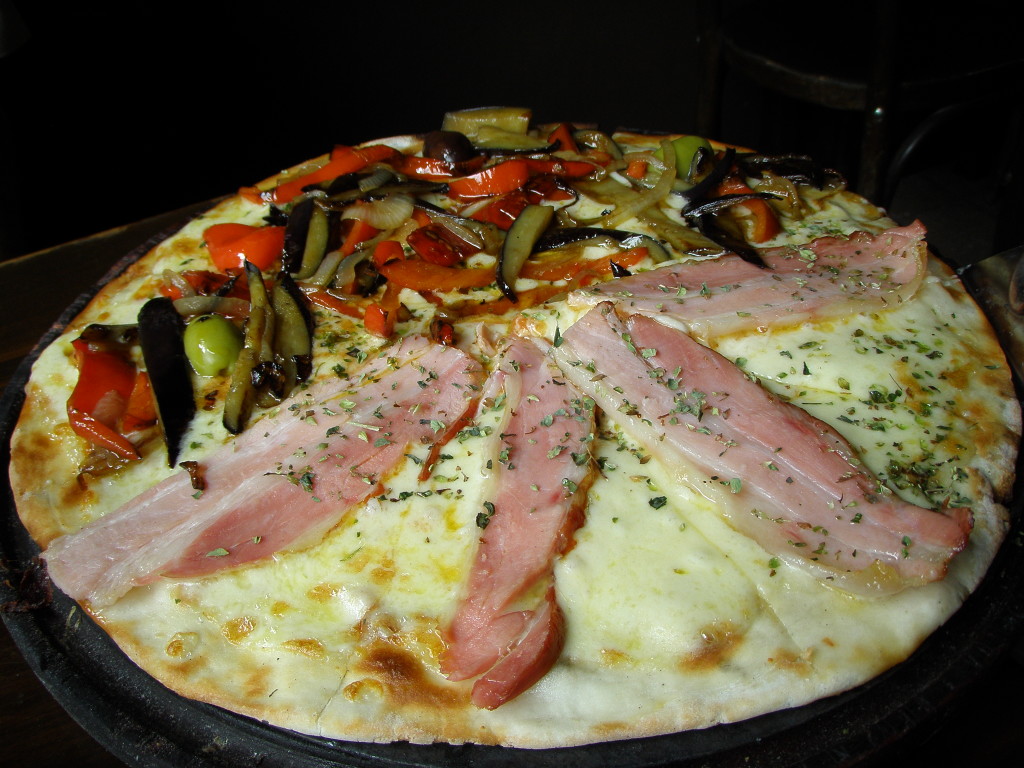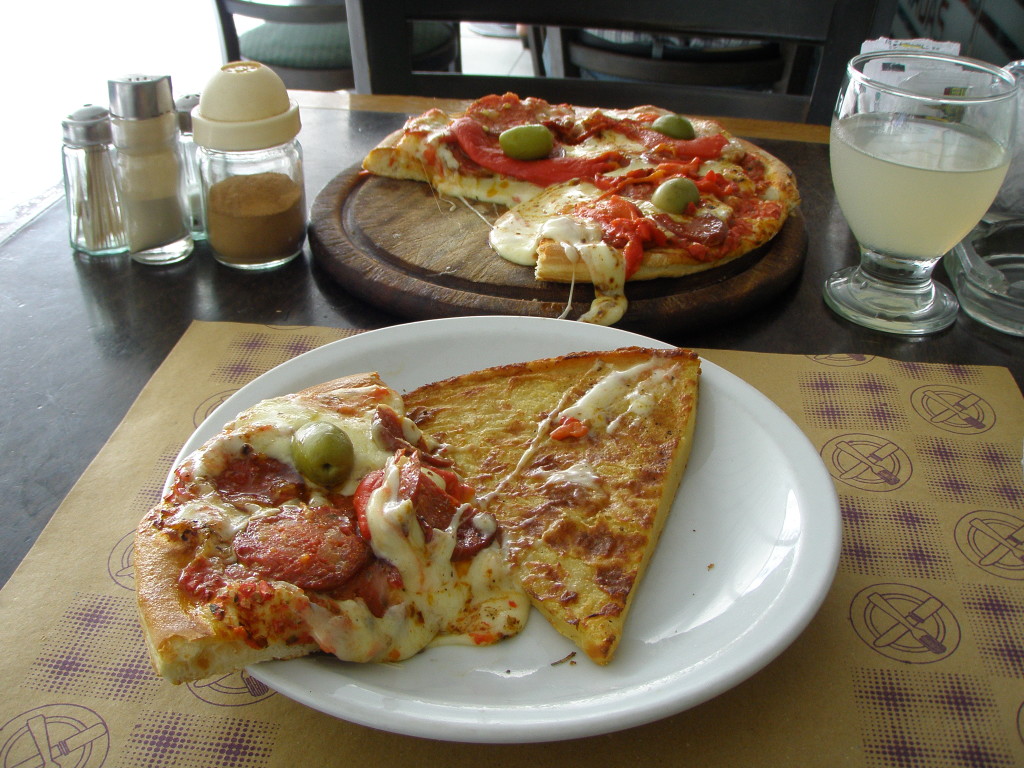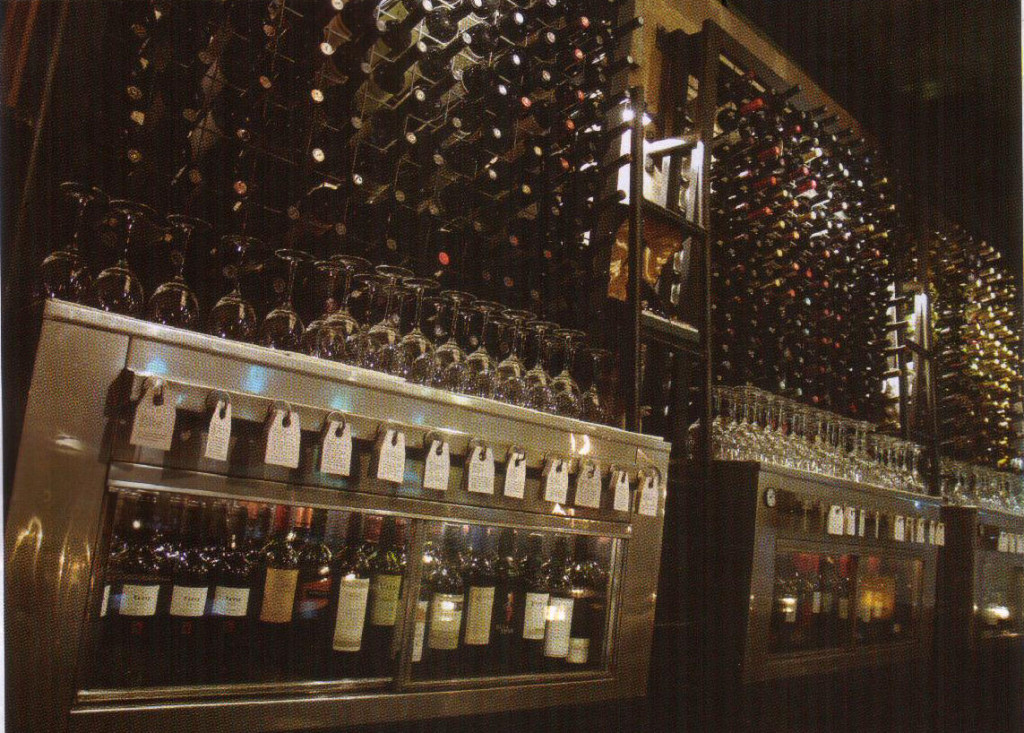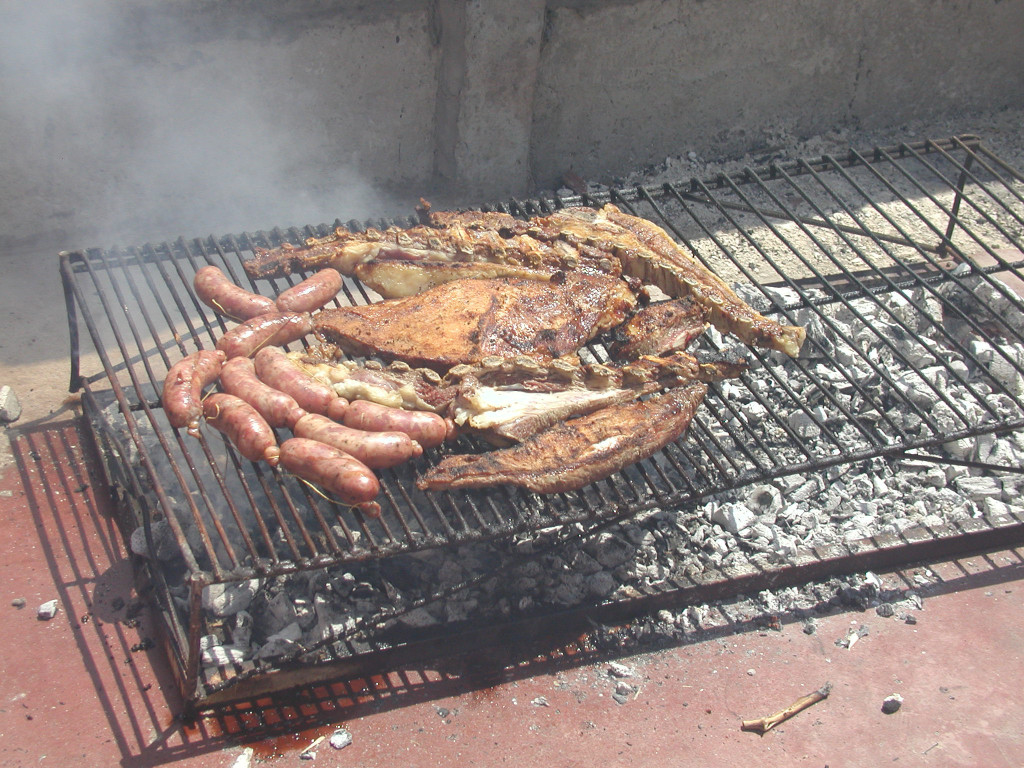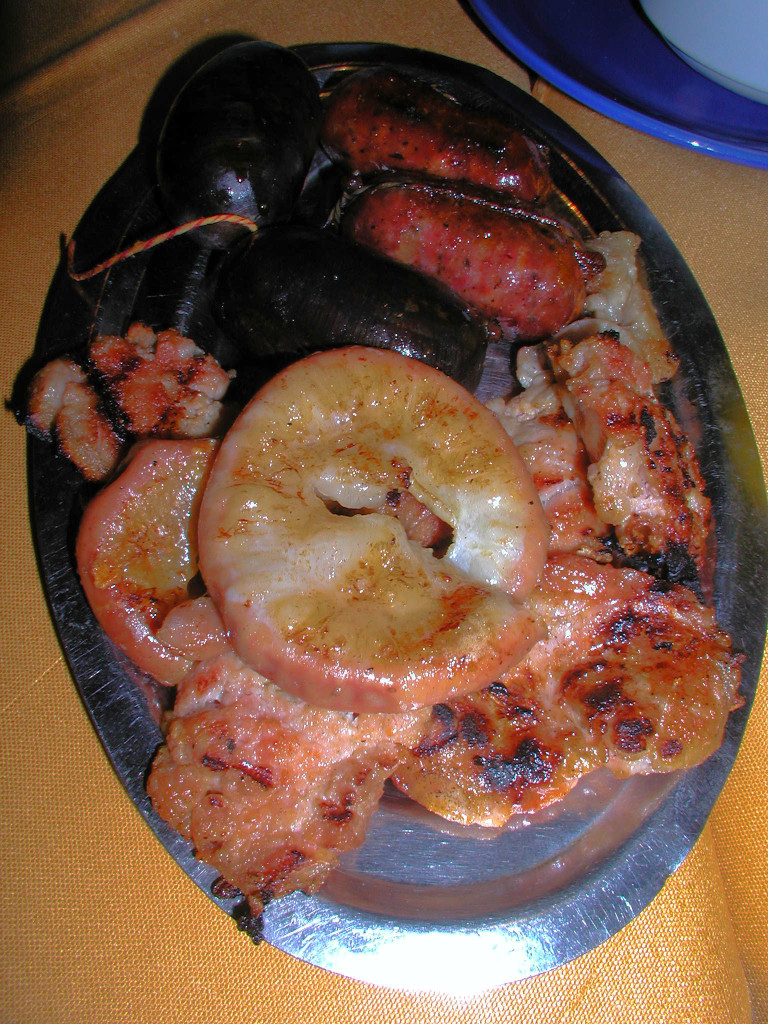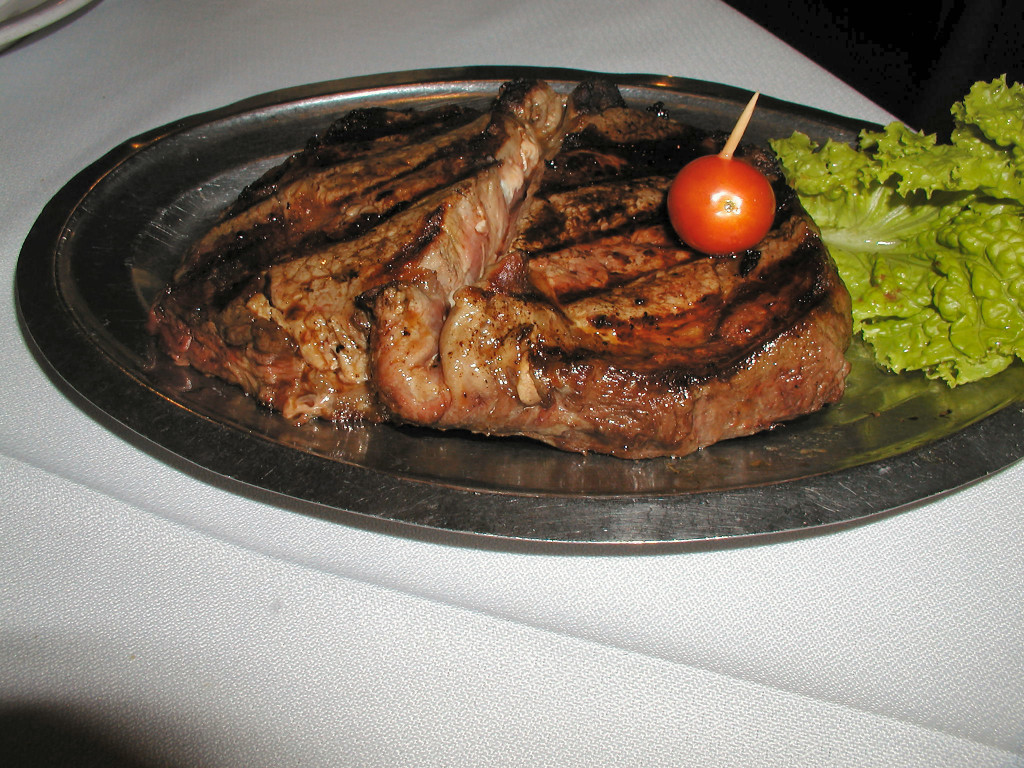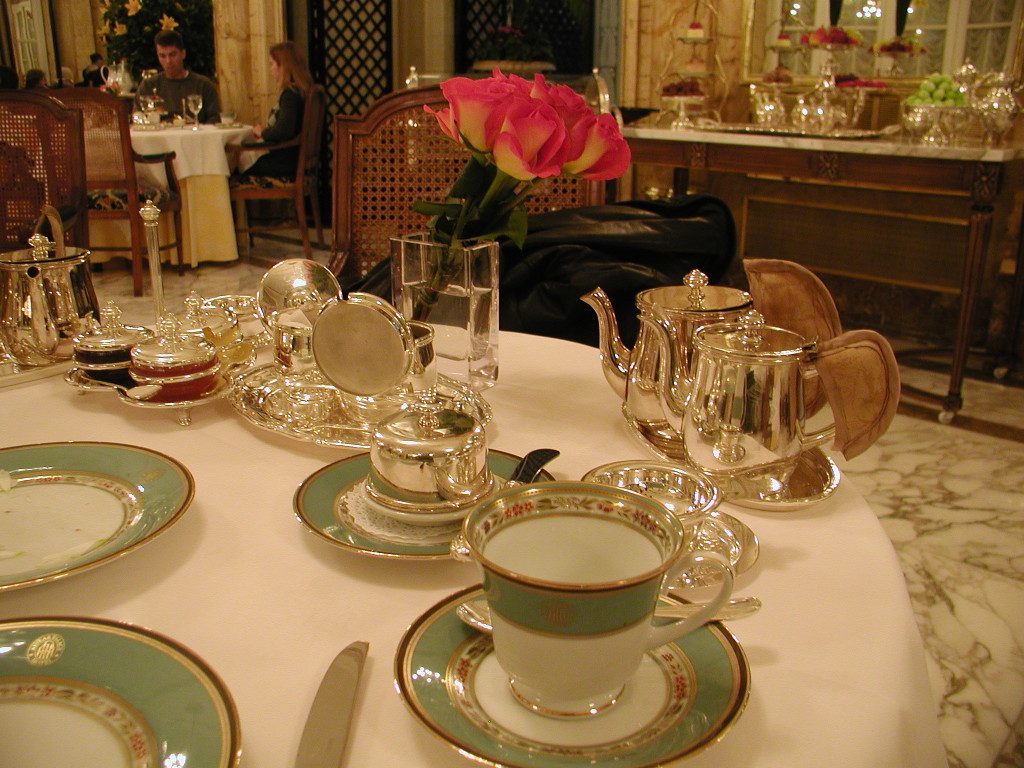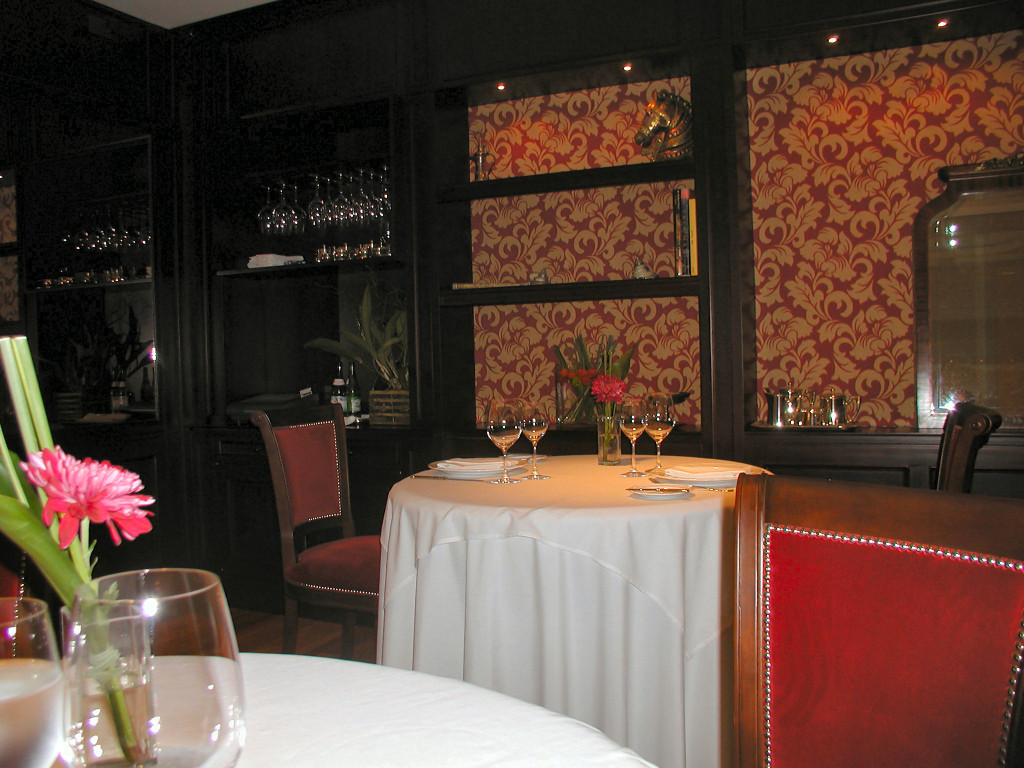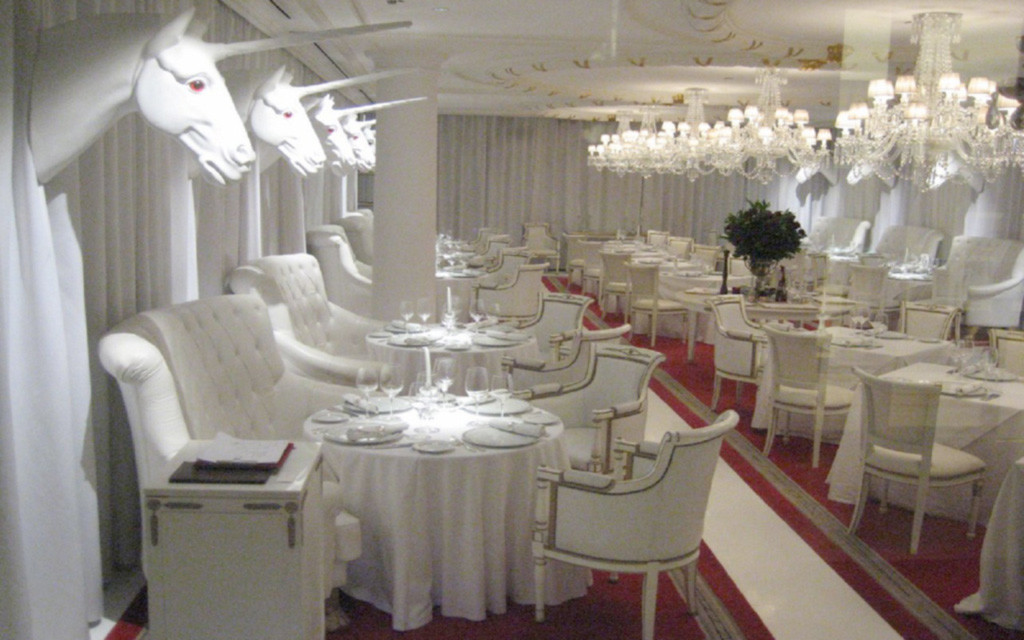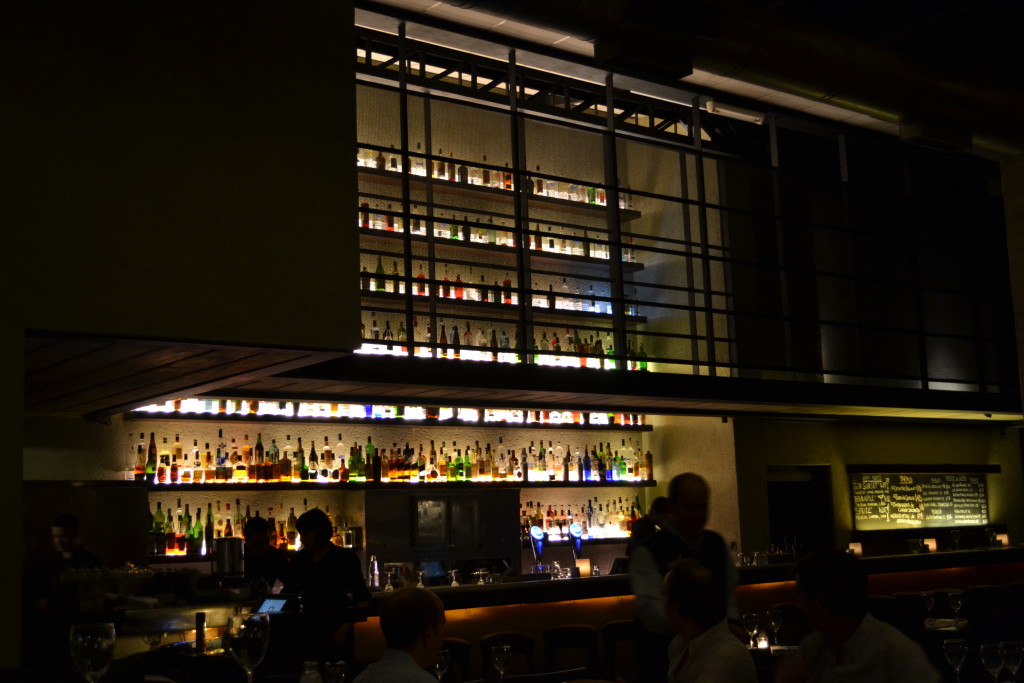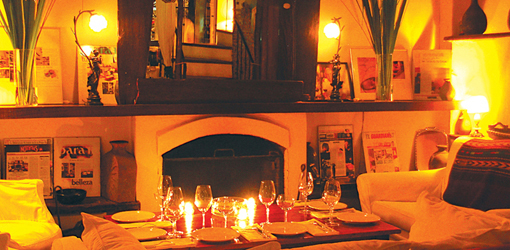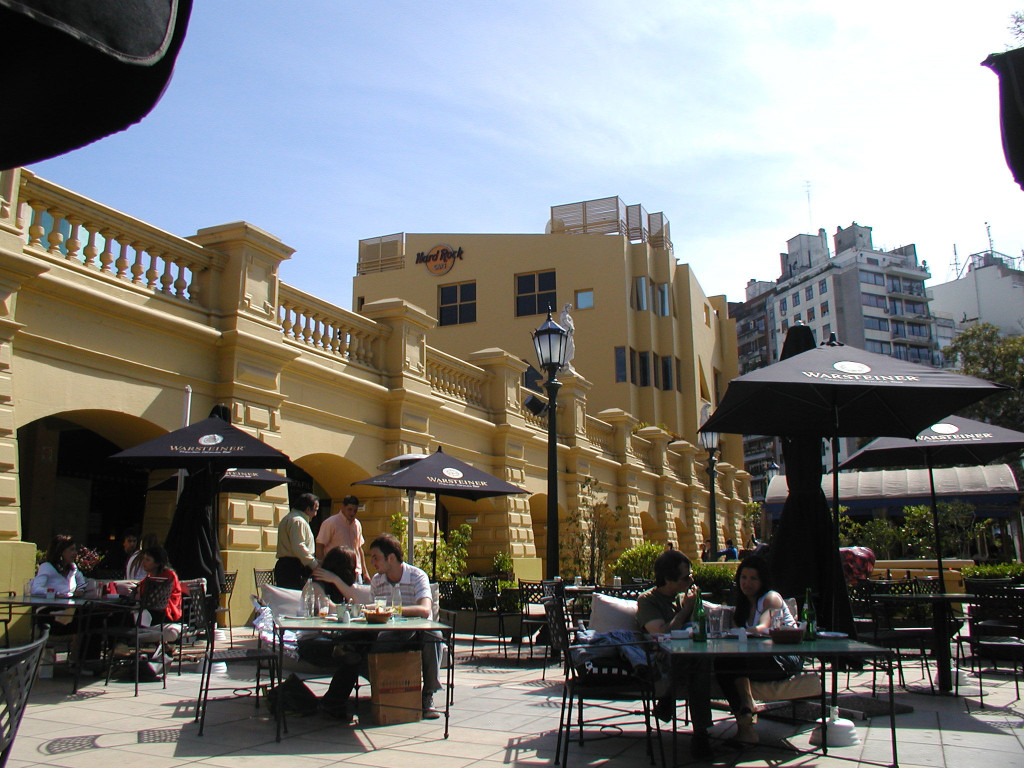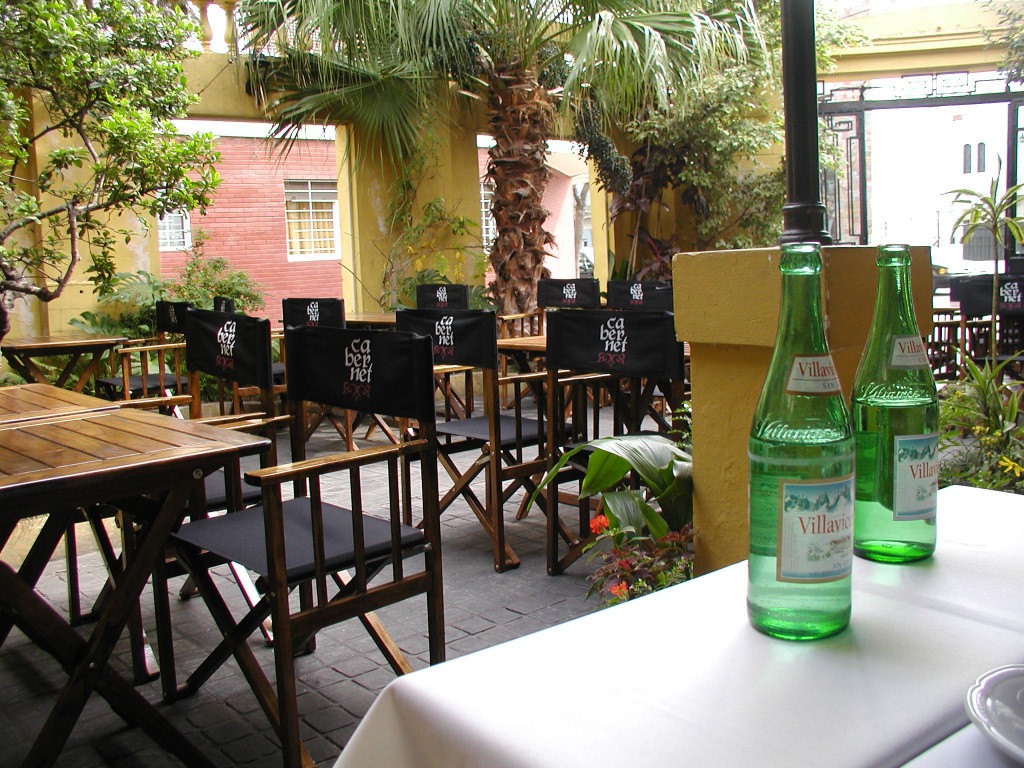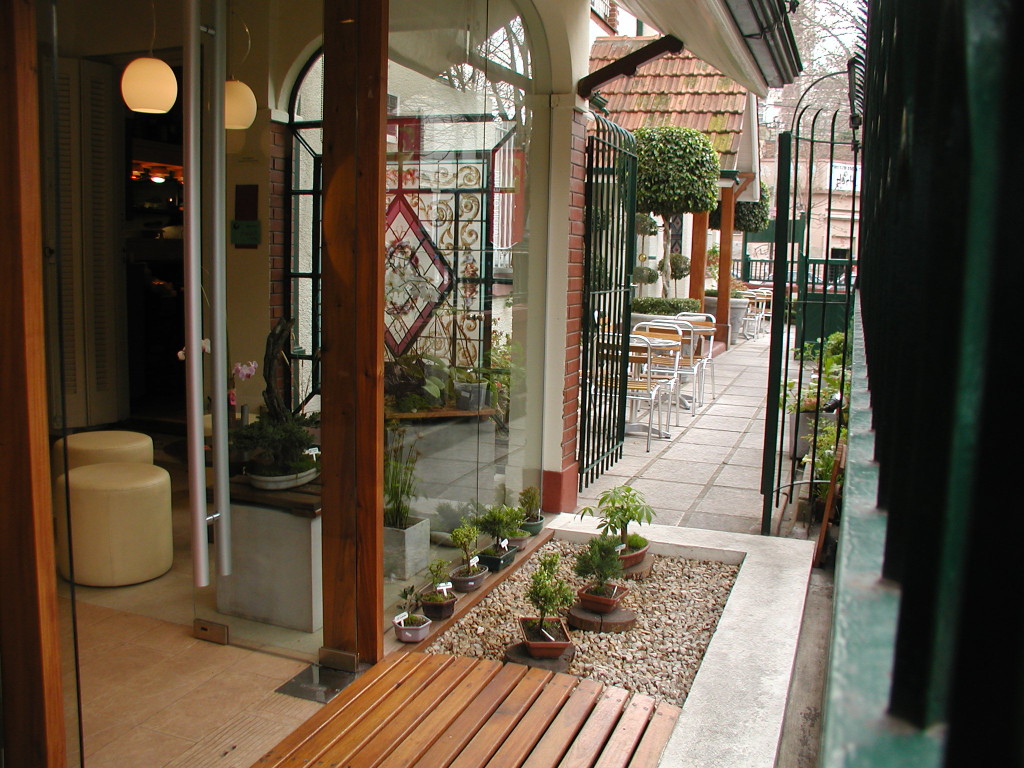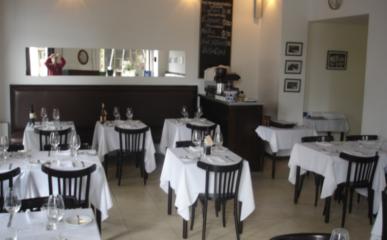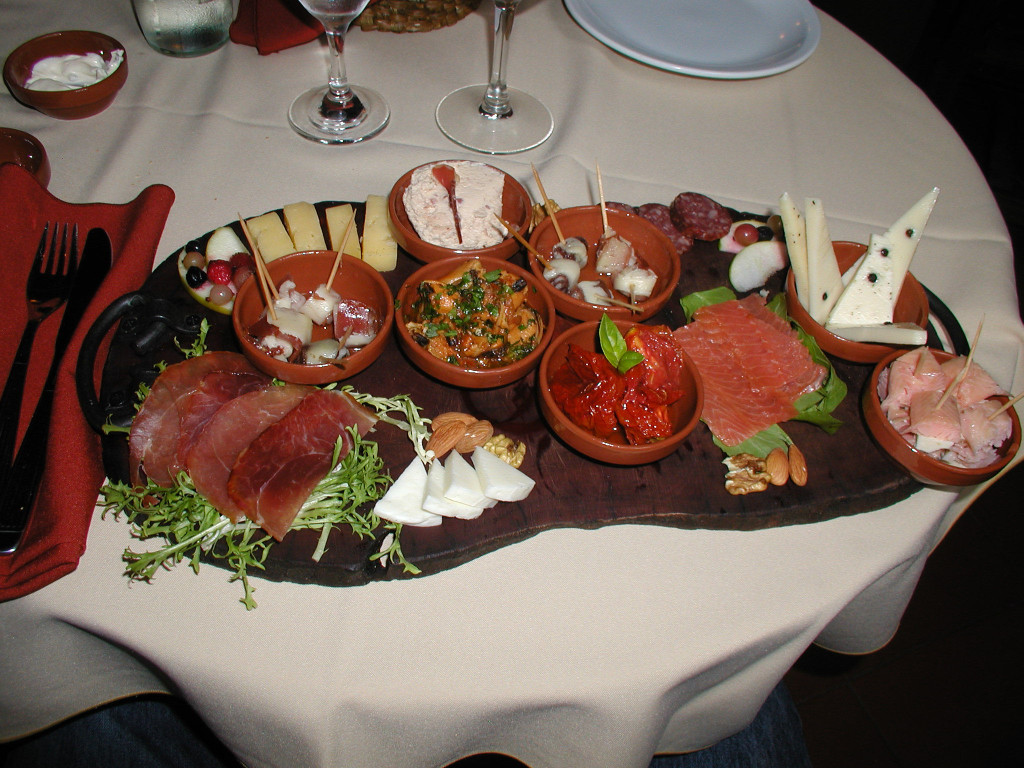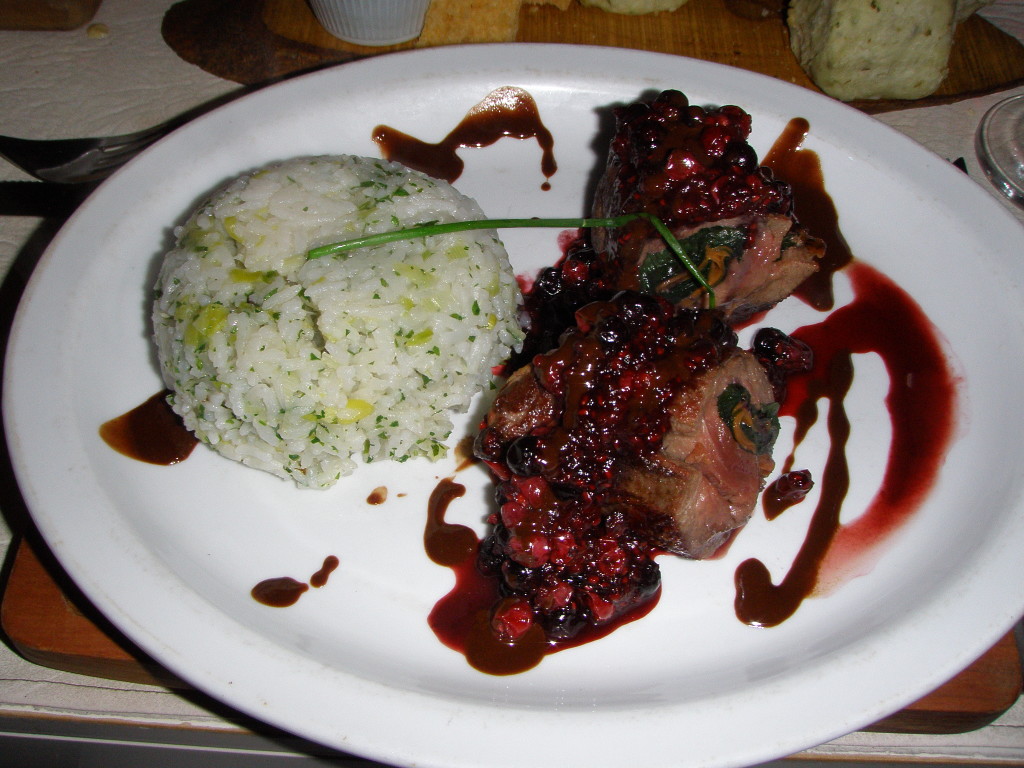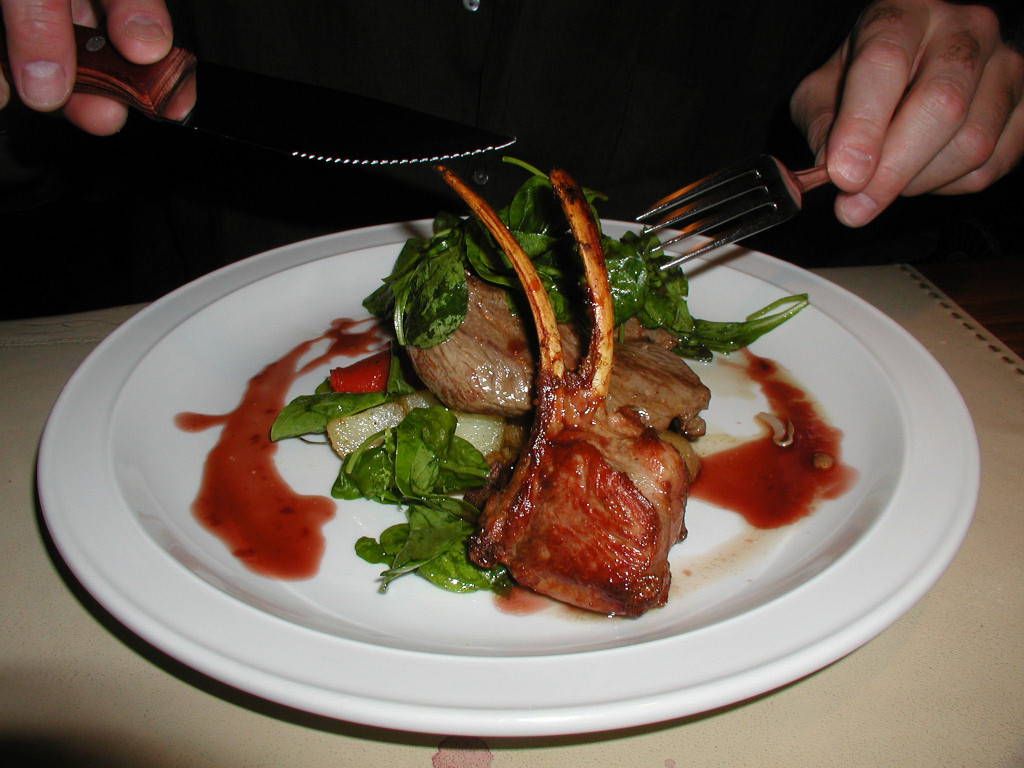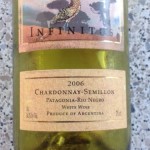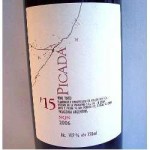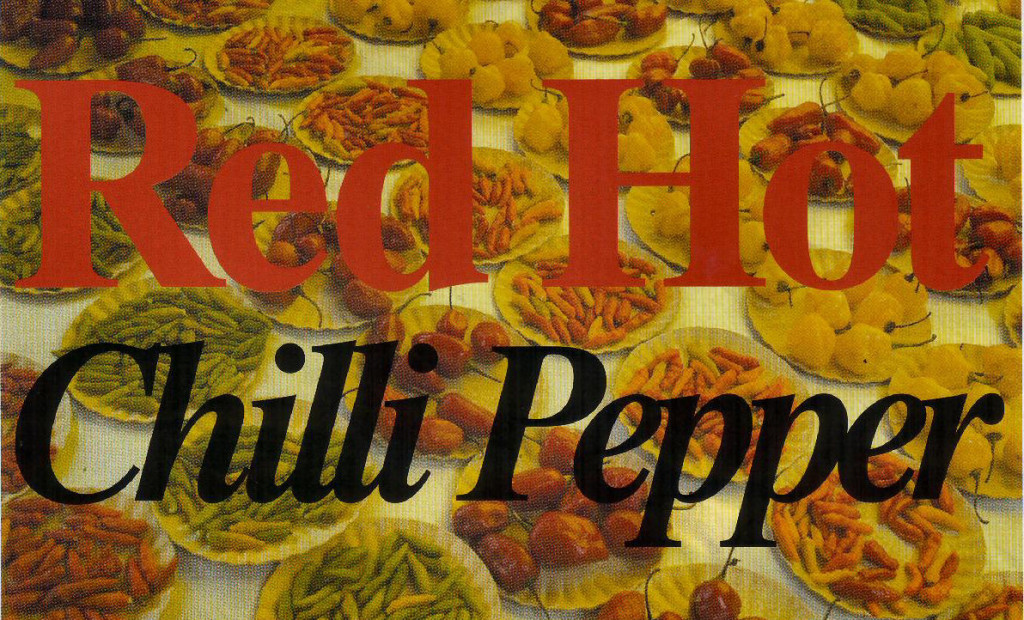Time Out
Buenos Aires for Visitors
Winter/Spring 2007
Restaurants
Eight reviews for the current issue.
Brasserie Berry
Tucumán 775, entre Maipú y Esmeralda, Microcentro (4394-5255). Subte C/Lavalle/29, 39, 100 bus.
Open 9am-4pm Mon-Wed; 9am-4pm, 7:30pm-12:30am Thur-Fri. Main Courses AR$22-35. Credit AmEx, DC, MC, V.
In France, your typical brasserie is a place where a wide range of locals come together under one roof to drink and eat. By definition, a casual café where beer, wine, and liqueurs are served – no place for fancy mixed cocktails – along with simple, tasty one dish meals – a place to meet and greet, have a quick bite, and move on about your business. Brasserie Berry’s Lyonnaise owners have got the formula down right. At lunchtime, when the spot is at its best, local business-people (usually men) stream in the door, plunking down at a table, and fire off an order for a quickly grilled steak, a piece of properly roasted chicken, or a fillet of fish, accompanied by a simple green salad or potatoes, a glass of wine or beer, and back out the door. While the atmosphere is boisterous and casual, with greetings between regular patrons being shouted across the room, regulars being pecked on the cheek by one staff member after another, it’s not a place where people linger over coffee and dessert, nor conversation. Still, the food is well prepared, and faithful to the home cooking of the south of France. Dinner time brings around a few more classic dishes, such as salmon in a white wine and butter sauce, and lomo in a rosemary and red wine jus, but still keeps with a simple theme – no elaborate multi-course menus, no frills – just good hearty food.
Cluny
El Salvador 4618, entre Malabia y Armenia (4831-7176/www.cluny.com.ar).Bus 15, 39, 55..
Open from noon Mon-Sat. Main Courses AR$30-45. Credit AmEx, MC, V.
Named after the Cluny Museum in Paris, Cluny is a paean to the museum’s star exhibit, the famed Lady with Unicorn tapestries that celebrate six senses – taste, smell, touch, sight, hearing, and understanding. With that goal in mind, you might think you were in for some sort of overwhelming temple of haute cuisine, instead, it’s a fashionable, relaxed spot, with a regular crowd that likes to see and be seen, but also likes to enjoy excellent food. It’s a pretty room, with lots of mixed textures, colors, different surfaces – very fitting. Service is, amazingly for the neighborhood, completely attentive, friendly, and helpful. The kitchen turns out one dish after another that combines simple ideas with delicious touches – a spectacular salmon tartare with delicate fresh herbs, a veal risotto tinged with mushrooms and flavored oil, a beautifully roasted chicken breast encompassing a surprise hidden filling of roasted tomatoes. While the wine list leans towards the usual suspects, it’s also got some breadth to it, and while you may recognize nearly every name, there are a good number of names to choose from.
Freud y Fahler
Gurruchaga 1750, entre El Salvador y Costa Rica (4833-2153). Bus 39. 55.
Open Noon-3:30pm, 8:30-midnight Mon-Fri; 12:30pm-4pm, 8:30pm-1am Sat. Main Courses AR$20-60. Credit AmEx, V.
When a local psychiatrist decides to open a restaurant, and put his own name up in collaboration with his distant mentor, the best thing to do is just ignore the name and hope that your dinner doesn’t come with a character analysis. The Rorschach test based decor does little to ease your mind, but the food and service, thankfully, are not as unfamiliar as all that presages them. In fact, the staff are there to answer rather than ask questions, just the way a restaurant ought to be, and the food is downright homey. Sure it’s creative, in the sense that there are interesting little touches of color and design on your plate, but the food is simple and direct, with no frills – spaghetti in butter sauce with vegetables, cheese ravioli, veal milanesas, hearty tomato or squash soups, deep fried chicken fingers served atop some herbed quinoa are about as outre as it gets. Here and there a dish is offered up with two different preparations of the same ingredient on a plate, but neither will challenge your senses. The wine list is pretty basic, though there are a couple of gems that step outside the usual world of Malbec and Cabernet that are worth exploring. Sometimes eating dinner is just eating dinner…
El Manto
Costa Rica 5801, esquina Carranza (4774-2409/www.elmanto.com), Bus 34, 55, 93, 108, 111.
Open 8pm-1:30am daily. Main Courses AR$26-35. Credit AmEx, DC, MC, V.
There is a slightly pervading air of secret fantasy in dining at El Manto. Not that the place is shrouded in the mists, in fact it sits prominently on a street corner. No, it’s the feel of the place – high concrete and brick walls and ceilings, dark colors of burgundy and black, mystical music playing softly in the background, and friendly but very silent waiters who move stealthily among the tables. Maybe it’s the fortune teller over in the corner waiting to read the dregs of your thick Armenian coffee at the finish of your meal. Maybe it’s the claim of nearly two millennia of history since the unnamed village from which the owners claim to come became the first bastion of Christianity in Armenia. Regardless, it’s definitely the spot for those who love this cuisine to come and set themselves down – it’s arguably one of the best. You’ll find all your favorites here – hummus, kibbe, kefte, kebabs, pilaf, tabouleh, and many more – and you’ll find them each prepared in a subtly different way than you’re probably used to. El Manto claims to be using traditional recipes that go back before all the modern shortcuts and substitute ingredients came into play – an insinuation on their part that others out there, perhaps, are not. Whether true or no, the food is definitely different, and served on a higher plane – read, more attractively – than the average Armenian joint in town. There’s an upstairs terrace and lounge that’s great for relaxing in, perhaps to contemplate the news delivered to you by the coffee clairvoyant, or perhaps just to kick back and enjoy one of the many selections from the short but well thought out and fairly priced wine list that includes a mix of well and lesser known producers.
Bereber
Armenia 1880, entre Nicaragua y Costa Rica (4833-5662). Bus 39, 55.
Open from 8:30pm daily; 12:30-4pm Thur-Sun. Main Courses $20-35. Credit AmEx, DC, MC, V.
When you’re the only kid on the block with a ball, you’re the one everyone wants to hang out with. Bereber has the same advantage with the only offering in town of Moroccan cuisine. Luckily, they like to share, and what they offer up is as good as you’ll find in most food capitals outside of Morocco itself. The space is light and airy, with a lounge section where you can plop your backside on a cushion on the floor and eat or take tea, or for those who prefer to dine at a regular table, there’s both a good sized dining room and a rooftop terrace that’s open in nice weather. Service is charming and friendly, perhaps a bit too far on the laid back side at times, there are moments when you may be convinced that the staff have secretly slipped out a back exit and gone home. But it’s all worth it when the food arrives – properly fluffy steamed couscous dishes with vegetable broth and fiery hot, traditional harissa chili paste served on the side to adjust to your own liking, a rich olive and chicken tagine, a sweet and savory layered pastella, and lots of fresh lavash flatbread to keep you happily munching away. The cocoa dusted bakhlava is one of the best out there and worth taking with a cup of strong coffee or a mint tea. At lunchtime Bereber offers up a couple of daily fixed price menu options, a short array of “wraps” – vegetable, chicken, beef, or lamb, and one selected dish from their evening menu that varies from day to day. The bar serves up a nice array of cocktails, the wine list and beer selection are a bit on the sparse side.
Green Bamboo
Costa Rica 5802, esquina Carranza (4775-7050/www.green-bamboo.com.ar). Bus 34, 55, 93, 108, 111.
Open from 8:30pm daily Main Courses AR$25-35. Credit AmEx, MC, V.
It could easily be said that Vietnamese culture offers up a fascinating contrast between resonance and dissonance. The food – some of the most harmonious of the Asian cuisines – with a unique balance between sweetness, saltiness, sourness, and spiciness. The visuals of daily life – clanging, clamoring, busy, and conflicted. Green Bamboo has this contrast in spades. Visually arresting – with deep reds and shiny gold surfaces, black lacquered serving trays, and a decor that looks like a knick-knack factory exploded just the other side of the bar, hip-hop and hard rock music blaring at high volume, and a young, hip crowd jamming in for a cocktail or a table. We should also mention the food, elegant, balanced, delicious – in fact, it just keeps getting better as the kitchen has come to the awareness that there are folks out there who really do like spicy food, and now offers up each dish at a heat level from standard porteño bland to levels one through three, the last actually reaching a level that might almost start a sweat. (You can kick that up a notch with a spoonful from a bowl of freshly crushed chilies on request.) Green Bamboo offers up some of the best fried calamari you’ll ever have, tentacles, not rings – with a trio of dipping sauces, a great five-spice pork, orange lacquered chicken, spot-on curries. There’s a bit of a Trader Vic’s feel at moments, with dishes being served up in pineapple or coconut shells, but look past that and just enjoy. The bar mixes a great cocktail, from classic to creative, and the wine list has a great range, and a selection that isn’t just Malbec, Malbec, Malbec. Someone here is paying attention, as the place has steadily improved with each visit.
Bar Uriarte
Uriarte 1572, entre Honduras y Gorriti (4834-6004/www.baruriarte.com.ar). Bus 39, 55, 111, 166.
Open noon-2:30am daily. Main Courses AR$30-40 Credit AmEx, DC, MC, V.
The newer kid on the block from the folks who brought us Sucre and Gran Bar Danzon, Bar Uriarte looks like a redesigned low-height version of Sucre – that same modern industrial aesthetic, touched off with some touches of dark wood – sort of the slinky, sexy sibling. Staying in form, your senses are drawn to the open kitchen that takes up one entire side of the restaurant from front to back, with tables arranged along the opposing wall. Lounge on a sofa up front, grab one of the tables near to the wood burning oven, or head back to the patio at the rear – part indoor, part outdoor, depending on weather. Bar Uriarte’s kitchen turns out food that could simply be termed classic. Not classical, in the sense of something that feels old or stuffy, but classic in the sense of well done tradition. Superb pizzas come right out of that oven, great pastas from another station along the line – don’t miss their housemade gnocchi, for those in the mood for meat, perfectly cooked sweetbreads, and delicious steaks off the grill are hard to beat, particularly when accompanied by a big bowl of crispy golden fries. The wine list is long and excellent, not surprising given the pedigree, and the bar turns out a nice selection of cocktails.
Sucre
Sucre 676, entre Figueroa Alcorat y Castañeda (4782-9082/www.sucrerestaurant.com.ar) Train to Scalabrini Ortiz/37, 130 bus.
Open Noon-4pm, 8pm-2am daily. Main Courses AR$27-40 Credit AmEx, DC, MC, V
“Modern industrial” doesn’t begin to capture the atmosphere at this cavernous space. Visually, your attention is drawn to any of three competing elements, rather like being surrounded by a trio of dominatrices – a huge concrete and glass wine cellar sitting squarely in the center of the space, a floor to three-story high ceiling bar lined with colorful bottles along the entire right hand wall, and a gleaming copper and steel kitchen that fills the entire backfield. If you keep your head down you’ll make it safely to your table – whether it’s a low mesa ratón in the front lounge, a heavy wooden block in the central dining area, or a high perch on one of the stools overlooking the kitchen. Once safely seated, order anything, seriously, anything, off the nuevo-pan-Latino menu and you’ll be happy – make sure with your server that they got your order, they have a tendency to suffer from the same visual whiplash as guests, and time after time we find their attention wandering. However, the kitchen turns out plate after plate of delicious modern interpretations of ceviche, risotto, grilled salmon, slow braised pork bondiola, and others that will keep your tastebuds tingling. The star chef, Fernando Trocca, has a penchant for touches of “molecular gastronomy”, so expect a foam or gel or powder here and there, but he’s smart enough and talented enough to use them as touches, not as dishes. That wine cellar and the bar are not just pretty faces – Sucre offers up one of the most extensive and best selected wine lists in the city, and a range of cocktails that rivals the top bars in town.
The following reviews were submitted on request, but not included in the final edition.
Eliot Resto & otras pasiones
Honduras 5237, entre Uriarte y Godoy Cruz (4831-1112/www.eliot.restaurant.com.ar). Bus 39, 55, 111, 166.
Open 4pm-midnight Mon, 10am-midnight Tue-Sat, 10am-4pm Sun. Main Courses AR$22-35 Credit AmEx, MC, V.
With a huge glass front, Eliot is nothing if not light and airy. The decor is minimal, tending towards randomly placed works of art with a vaguely indigenous quality to them – not indigenous necessarily to here, but indigenous to… somewhere. The tables are likewise scattered about, not quite arrayed in any set pattern, and not too close to each other – which, depending on your personal tastes, leaves you feeling like you have some privacy to chat with your companions without neighbors listening in, or feeling a certain lack of intimacy and warmth. We swear there’s a faint echo. But you’ll have little time to note those elements, as the servers here are quick on the draw and friendly to boot. They know the food, they’re happy to make recommendations, and fitting the space in which they work, they take advantage of it and come by and check up on you regularly. The food is lightly creative – classic local dishes of pastas, risottos, grilled fish and meats, leaning a little towards the Italian side of things, but each with interesting touches that set them apart from the ordinary – squash soup seasoned with cardamom seeds, beet juice tinged risotto with blue cheese, pork loin wrapped in prosciuto with an arugula pesto are just some of the better examples. This is creativity with restraint, and it works. The wine list is excellent, the bar turns out decent cocktails, and a lunch, they offer up an under 20 peso fixed price menu. We never did find out what the otras pasiones were…
José Luis
Av. Quintana 456, entre Ayacucho y Callao (4807-0606). Bus 10, 59, 60, 95, 101.
Open 12pm-3pm, 8:30pm-midnight Mon-Sat. Main Courses AR$25-45 Credit AmEx, DC, MC, V.
Buenos Aires is not noted for its seafood restaurants, and many of them are indeed questionable. But there’s no question here – José Luis is easily one of the top spots for denizens of the oceans to be dined upon. The style is Spanish, leaning towards Basque, and while there’s a small selection of red meat for those who simply can’t give up their daily steak, the vast part of the menu is fish. Here, they serve up fish as it was meant to be – simply grilled, a touch of olive oil and herbs, perhaps a little lemon. There are some more elaborate preparations that are worth checking out – their lenguado (flounder) roasted in creamed spinach is simply amazing. In truth, anything you select off the lists of fish, the different preparations, and at a variety of price levels (José Luis’ menu is interesting in that it seems to have items for every budget – from main courses that run under 20 pesos to those that get close to three figures), will be a delight. Service is fairly formal, and the dining room, especially at dinner time, is elegant – while there’s no dress code, you may feel like you ought to self-impose one. Don’t miss out on the traditional Spanish desserts mixed in with the local favorites. This is definitely a wine spot, and they offer up an excellent wine list, with good breadth of selection, albeit a bit on the pricey side.
In mid-2006, I started writing for Time Out Buenos Aires. With changes in their way of conducting business, I decided to part company with them after my last article and set of reviews in mid-2009.





